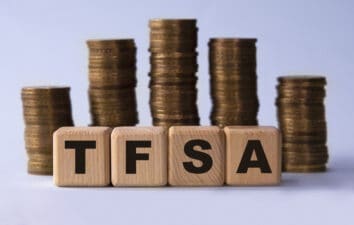JANUARY 23 UPDATE: Algonquin Power recently reduced its dividend payout, which is now closer to 6%.
Algonquin Power & Utilities (TSX:AQN) is an Oakville-based company that owns and operates a portfolio of regulated and non-regulated generation, distribution, and transmission utility assets. Today, I want to discuss why I’m targeting this high-yield dividend stock that also looks dirt cheap. Let’s jump in.
How has this stock performed over the past year?
Shares of this dirt-cheap stock have plunged 45% year over year as of close on January 17. However, the stock has climbed 4.2% in the first trading weeks of the New Year. This is a promising sign to start 2023 and a sign that investors should prepare to take advantage of a looming bull market.
Despite its recent struggles, investors should be eager to target equities in the renewable energy space. McKinsey, the Toronto-based consulting giant, recently projected that by 2026 global renewable-electricity capacity will rise more than 80% from level posted in 2020. Moreover, two-thirds of this increase will come from wind and solar — a 150% spike. By 2035, McKinsey estimates that renewables will generate 60% of the world’s electricity.
What caused Algonquin stock to crash?
Algonquin stock ran into major turbulence back in November 2022. This occurred after the release of its third-quarter fiscal 2022 earnings on November 11. The post-earnings dip would push Algonquin into single-digit price territory for the first time in over half a decade.
The company conceded that the third quarter was a difficult one, as it has been forced to traverse a complicated economic climate. Results “came in below our expectations and were negatively impacted by increasing interest rates and the timing of tax incentives related to certain renewable energy projects,” said Arun Banskota, president and chief executive officer (CEO).
Should investors be encouraged by its recent results?
Investors can expect to see the company’s final batch of fiscal 2022 earnings in the beginning of March. However, Algonquin did provide a business update on January 12, 2023.
CEO Arun Banskota hinted strongly that major changes may be ahead for the company as it tangles with various difficulties. He emphasized that the company will be “taking steps to realign our capital allocation, reduce capital expenditures, refocus the portfolio, and reduce the dividend in order to position the company for sustainable, long-term growth.”
In December 2022, Algonquin was blocked from acquiring Kentucky Power by the U.S. Federal Energy Regulatory Commission (FERC). However, it has continued to seek FERC approval in the beginning of 2023. Moreover, the company will pursue roughly $1 billion in asset sales that it will use to service debt and invest in growth projects.
Overall, the company is projecting adjusted net earnings per common share between $0.55 to $0.61 for the 2023 fiscal year.
Algonquin: Why I’m buying this stock today
The Relative Strength Index (RSI) is a technical indicator that measures the price momentum of a given security. Algonquin has been trading in or around technically oversold territory for most weeks since the middle of September. The recent spike pushed the stock into neutral price levels. Despite that, I’m still looking to snatch up this cheap stock that is trading in favourable value territory compared to its industry peers.
Algonquin currently offers a quarterly dividend of $0.181 per share. That represents a monster 10% yield.








